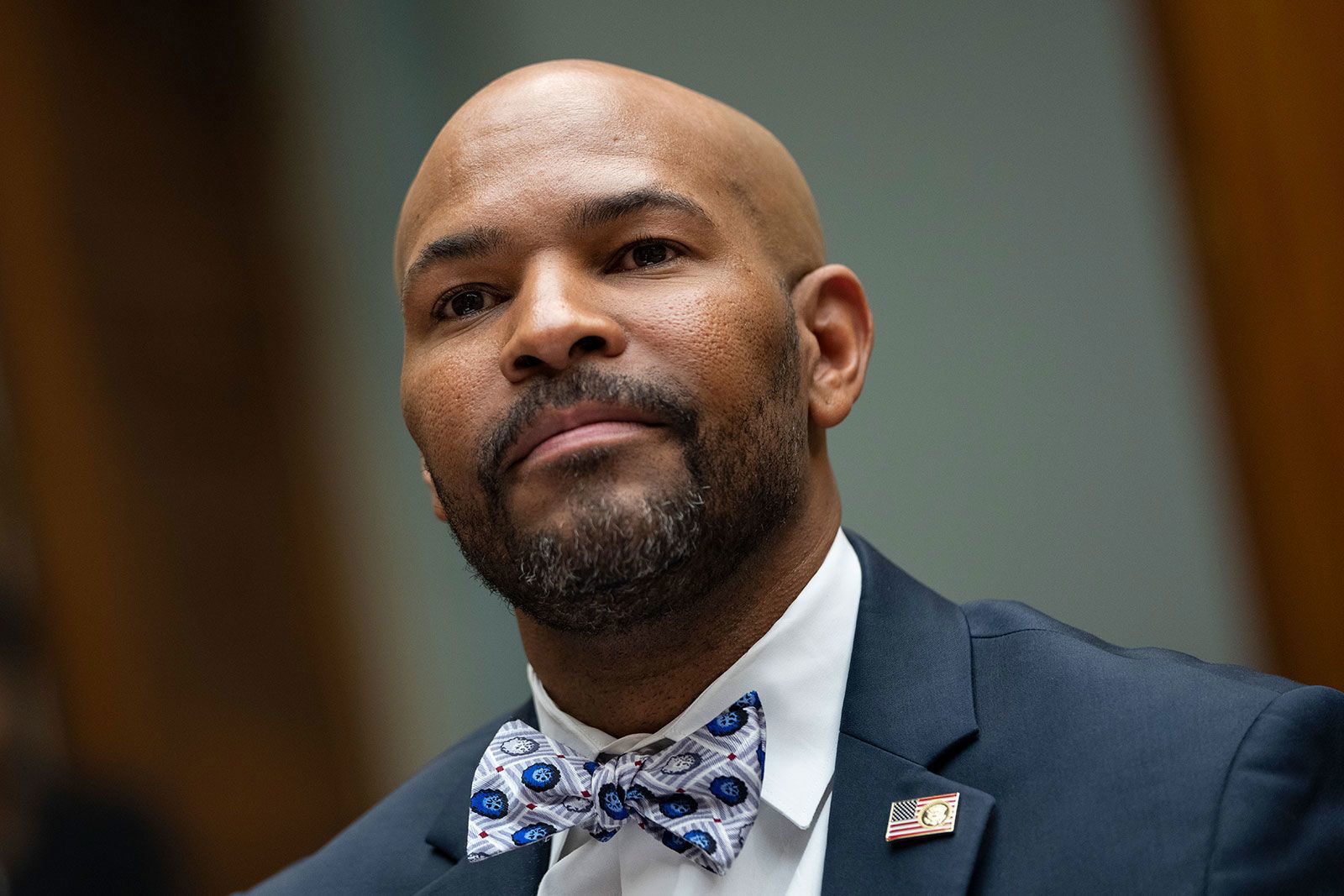Former US surgeon general: Opioid fight demands better overdose reversal strategies, stronger policy support

Former US Surgeon General Dr. Jerome Adams says federal funding is crucial to maintaining progress against deadly opioid overdoses.
Opinion by Dr. Jerome Adams
(CNN) — The recently passed One Big Beautiful Bill Act, which experts predict will reduce Medicaid coverage for millions of Americans, combined with the proposed elimination of a $56 million grant for overdose reversal training and distribution, threatens to undermine progress in reducing opioid overdose deaths. Medicaid, particularly through its expansion, supports treatment for about 1 million people with opioid use disorder.
If federal funding falters, many people could lose access to care, reversing hard-earned gains against overdose deaths that were driven by expanded health care and lifesaving tools. As synthetic opioids like fentanyl fuel a continuing overdose crisis, sustaining progress will demand both robust policy and advancements in overdose reversal strategies.
Although drug overdose deaths made a significant drop in 2024 to the lowest level in five years, according to federal estimates, there were still more than 80,000 deaths last year. Synthetic opioids were involved in more than half of those cases.
High-potency synthetic opioids (HPSOs) like fentanyl, which is 50 to 100 times more potent than heroin, have reshaped the overdose landscape. Fentanyl can cause rapid respiratory arrest within minutes and often outlasts standard reversal agents. First responders frequently report now having to administer multiple doses of naloxone (best known by the brand name Narcan) to reverse a fentanyl overdose.
A recent analysis by Dr. Mark Gold, of the Department of Psychiatry at Washington University, and colleagues explores the challenges of reversing HPSO overdoses, drawing on observational studies, lab data and clinical experience. They emphasize that effective reversal requires matching the agent to the opioid’s potency and duration, a complex task given the increasingly unpredictable nature of illicit drugs today.
Among the options, nasal nalmefene has emerged as a notable tool due to its rapid onset and longer duration compared with naloxone, the standard reversal drug. Administered via a simple spray, it acts quickly to restore breathing and helps reduce the risk of ”renarcotization,“ in which overdose symptoms return after initial reversal.
However, the American College of Medical Toxicology and the American Academy of Clinical Toxicology advise caution in adopting nalmefene as a primary agent, citing potential risks like prolonged withdrawal symptoms or the return of respiratory depression as the drug’s effects wane.
These concerns are not unique to nalmefene, however, as all opioid antagonists carry similar risks. Further, these risks are readily managed with proper medical oversight and monitoring, a standard practice post-reversal.
To put it plainly, I’d rather risk having to treat such side effects in a resuscitated and living person than to keep wondering “what if” about the tens of thousands each year who sadly are not saved with our current efforts.
The development of new reversal agents like nalmefene underscores the critical need for sustained research funding to address the evolving opioid crisis. Recent budget proposals, however, include significant cuts to the US National Institutes of Health and the US Centers for Disease Control and Prevention, with the NIH facing a proposed 40% reduction to $27.5 billion and the CDC a 44% cut to $4 billion in 2026, threatening research into new treatments and public health responses.
These cuts could stall progress on innovative solutions like Compound 368, which enhances naloxone’s potency 7.6-fold and extends its effect tenfold, and covalent naloxone nanoparticles (cNLX-NP), which could sustain therapeutic levels for 48 hours to prevent renarcotization. While promising, cNLX-NP’s slower onset requires pairing with fast-acting naloxone for immediate effect. Such potentially life-saving advancements will depend on consistent funding to move from lab to real-world use.
Policy has and will continue to play a critical role in stemming the tide. The World Health Organization recommends restricting access to precursor chemicals used in fentanyl production and strengthening international controls on its analogs. I’m glad to see this is one of the few areas in which WHO and the Trump administration agree. Enhanced border security and surveillance can further limit the supply of illicit HPSOs.
Equally important is education, with updated training for first responders and bystanders emphasizing the interplay between reversal agents and immediate CPR, as HPSOs rapidly induce hypoxia. Public awareness campaigns should highlight the potency of HPSOs and the need for rapid intervention, newer agents like nalmefene and/ or multiple doses or Narcan, and post-reversal monitoring.
Thankfully, the CDC reports a recent decline in national overdose deaths. Yet vulnerabilities persist, particularly in communities facing geographic, racial or demographic disparities.
The rise of fentanyl-laced stimulants – which drove a 50-fold increase in related overdose deaths from 2010 to 2021, accounting for 32.3% of fatal overdoses – complicates the crisis. These contaminated drugs turn non-opioid use into a lethal risk, as users often lack opioid tolerance. Comprehensive strategies combining policy, education, and innovative reversal tools are essential to address this polysubstance threat.
Protecting Medicaid and overdose prevention funding is critical to sustaining progress in the fight against opioid overdose deaths. By pairing these efforts with evidence-based training and advancements in reversal strategies, we can better equip communities to confront the evolving opioid crisis and save lives.
The-CNN-Wire
™ & © 2025 Cable News Network, Inc., a Warner Bros. Discovery Company. All rights reserved.



